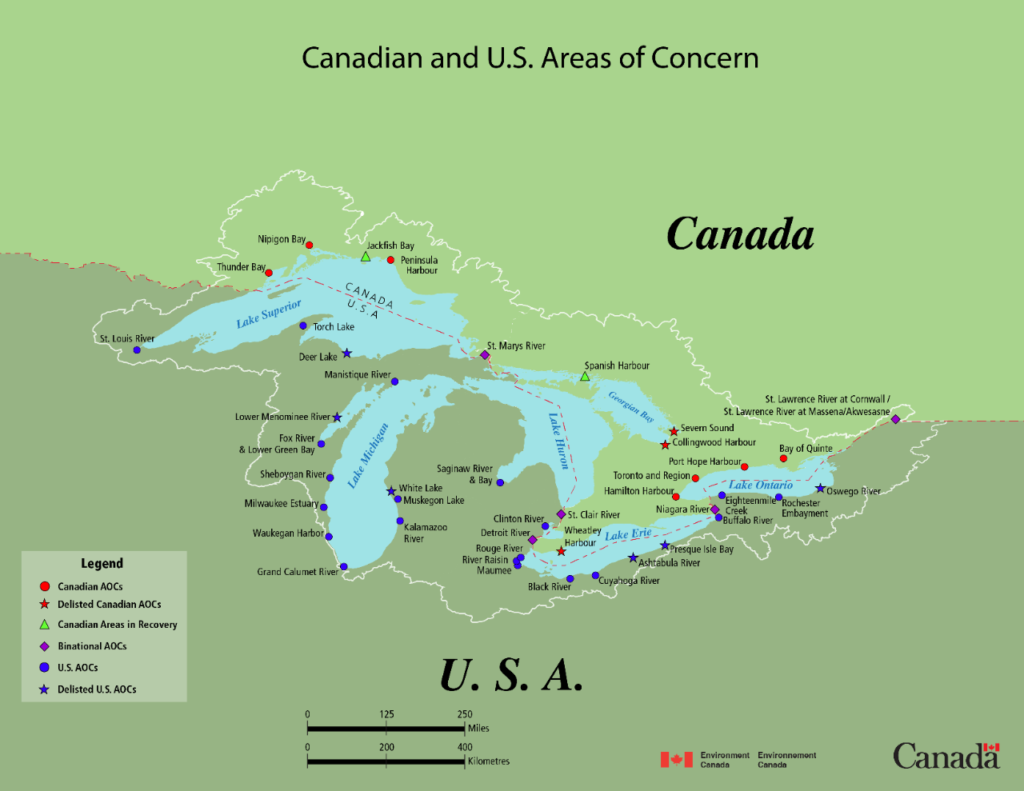What is an Area of Concern?
In 1972, Canada and the United States agreed to cooperatively address environmental damage caused by historic human activities in the Great Lakes Basin. Through the signing of the Canada-U.S. Great Lakes Water Agreement (GLWQA), both countries committed to “restoring and maintaining the chemical, physical, and biological integrity of the waters of the Great Lakes ”.
Through the 1987 GLWQA, the International Joint Commission (IJC) identified 43 Areas of Concern (AOC) within the Great Lakes basin where concentrated environmental degradation had occurred. In each AOC, a localized clean-up plan, termed Remedial Action Plan (RAP), was developed to guide restorative actions.

There are 14 common environmental challenges that interfere with human use and enjoyment of water, referred to as Beneficial Use Impairments (BUIs), that each RAP uses to assess the severity of degradation, focus restoration efforts, track progress, and measure success.

Who implements the Remedial Action Plans?
In response to environmental degradation around the Great Lakes basin, the GLWQA called for the development of local RAPs to guide restoration efforts at the AOCs. The RAP is a collaborative effort between many partners including all levels of government in Canada and the United States, Indigenous communities, non-government organizations, academia, industries, and the public.
Each AOC has its own local RAP team with representation from these various stakeholders to implement actions and track environmental conditions.
What is the goal?
The goal of a RAP program is to restore environmental conditions according to established BUI delisting criteria to achieve the major environmental goal of removing the AOC from the list of AOCs—a process called delisting.
Delisting occurs when government agencies and local communities confirm that all locally-defined remedial actions have been completed with scientific evidence and public support.
Delisted AOCs
So far, three Canadian locations have been delisted from the list of Great Lakes AOCs thanks to efforts from many partners:
While tremendous progress has been made, there is still work to be done at the remaining Canadian AOCs! Learn more about the important work underway at an AOC near you by clicking the location in the AOC menu at the top of the page.